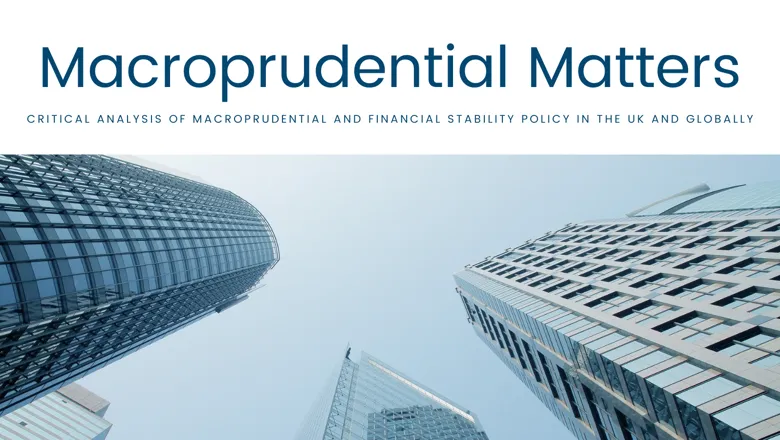13 September 2021
Macroprudential policy as part of a broader financial stability regime: does it exist, what should it be?
Qatar Centre for Global Banking and Finance
Macroprudential policy is (supposedly) the dynamic component of financial stability policy. Visit macroprudentialmatters.com to read the full article

The Qatar Centre for Global Banking and Finance proudly presents the Macroprudential Matters website, which offers a critical analysis of macroprudential and financial stability policy in the UK and globally. The website publishes opinion pieces by experts writing in their own capacity on a range of aspects of the macroprudential policy debate and has no house view.
Sir Paul Tucker (Chair of the Systemic Risk Council, a fellow at Harvard Kennedy School, and author of Unelected Power: The Quest for Legitimacy in Central Banking and the Regulatory State) penned the opening blog for the website. Read an excerpt of the article below.
Macroprudential policy as part of a broader financial stability regime: does it exist, what should it be?
Author: Sir Paul Tucker
Published: 13 September 2021
Macroprudential policy is (supposedly) the dynamic component of financial stability policy. Leading researchers recently described its purpose as being to “moderate the procyclicality of the financial system and thereby secure the resilience and stability of the financial system as a whole.”[1]
There is a good deal to be said about that, including whether any country with an international finance centre is operating a policy anything like it (no), and whether they should if they could. But jumping straight to such questions is hazardous because the nature of any dynamic policy depends on whether the background regime of resilience requirements for financial intermediaries is broadly optimal or materially deficient. In the latter case, which is the one that matters now, a vital role for dynamic macropru policy is to mitigate the costs of gaps and inadequacies. In practice, it has not done so.
Questions about the adequacy of the regime for financial stability: gaps highlight an important missed opportunity for dynamic macro-prudential policy
The purpose of a financial stability regime is to ensure that worries about the stability of the financial system do not materially affect the functioning of the wider economy. That is a few paces back from pinpointing procyclicality as the root of the problem: when the banking system has next to no equity, as before 2007, severe procyclicality is caused by lack of resilience, not vice versa.
Important questions, therefore, coming before normative assessments and prescriptions, are whether the static regime is complete, clear, and incentive compatible.
Away from banks, the big issue is holes in the regime, mostly concerning leverage and liquidity mismatches outside banking. That this matters is underlined by the March 2020 rescues — mainly in the US but probably not only there — that dare not speak their name.[2]
This is where dynamic macropru might have made a difference. With monetary policy constrained by passive (or contractionary) fiscal policy to bear pretty much the whole burden of reviving economic activity after the Great Financial Crisis, it was widely expected to have some undesirable side effects, including fueling a sometimes reckless, and in any case herd-like search for yield in financial markets. When taken with the incentives for some risk-taking to move out of re-regulated banks to less regulated or unregulated vehicles, the expectation was for a build-up of fragility outside the perimeter of the de jure safety net.
Continue to the full article
Written for the Macroprudential Matters website, proudly managed by the Qatar Centre for Global Banking and Finance at King’s Business School. Read the rest of the article here.
